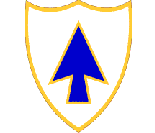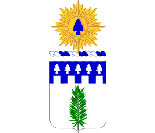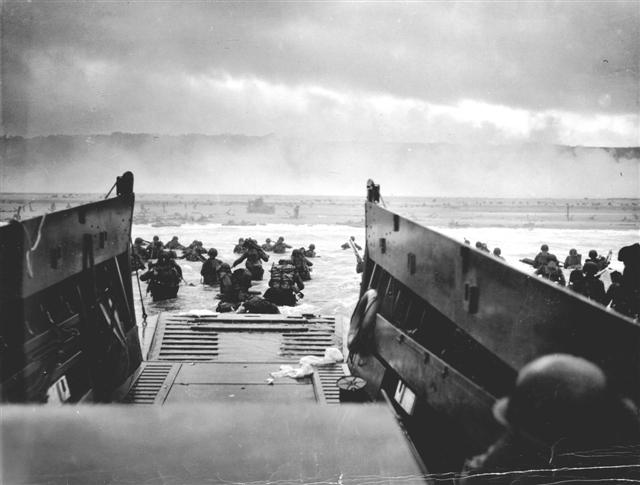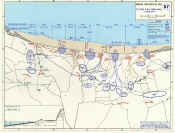
We are a Living History Group based in the Mid-Atlantic Region of the U.S.A.
We portray units of the 1st Infantry Division, including the 16th, 18th and 26th Infantry Regiment's, 701st Ordnance Light Maintenance Company, the 1st MP Platoon, 1st Medical Battalion, 1st Signal Company, 1st Recon Troop Mechanized, and other attached units and personnel from WWI to present day.
Big Red One Living History Organization, Inc. - Attached Units click here
Big Red One Living History Organization, Inc. - Attached Units click here
We are a 501(c)(3), Incorporated in the state of PA and are fully insured

1st Battalion 26th Infantry Regiment
"Blue Spaders"
At the beginning of the 20th Century, the United States Army was sorely pressed to meet its overseas commitments in Cuba, the Philippines, and Puerto Rico. As a result, in 1901 Congress authorized five additional Regular Army Infantry regiments; the 26th, 27th, 28th, 29th and 30th Infantry. All five regiments subsequently served the Army well. The 27th Wolfhounds of the 25th Division, the 28th Black Lions of the 1st and 8th Divisions, the 29th "school troops" of Fort Benning, and the 30th Rock of the Marne of the 3d Division, have earned a special place in Army history.

The 26th Infantry began its life overseas in the Philippines and spent its first 20 years of service on deployments to the Southwest Pacific, the Mexican and Indian frontier and in Europe. It earned its first battle streamer during the Philippine Insurrection within 2 years of its forming as a unit.
After returning to the same location for another tour of duty (a habit the Blue Spaders would keep for the entire century), the regiment fought off Mexican bandits and settled disputes in the Indian Territory until it was selected as one of only four Regular Army Infantry Regiments deemed fit for immediate combat to form the first American Expeditionary Division in June of 1917. This expeditionary division would later be renamed the First Division and thus began the regiment's long association with the Big Red One.
After returning to the same location for another tour of duty (a habit the Blue Spaders would keep for the entire century), the regiment fought off Mexican bandits and settled disputes in the Indian Territory until it was selected as one of only four Regular Army Infantry Regiments deemed fit for immediate combat to form the first American Expeditionary Division in June of 1917. This expeditionary division would later be renamed the First Division and thus began the regiment's long association with the Big Red One.
As part of the first American soldiers to arrive in France, the regiment immediately left for the front. Along with its sister regiments of the division, it earned more campaign streamers than any other regiments during the First World War, but at a terrible cost. Over 900 Blue Spaders lost their lives in a six-month period. At Soisson alone, the regimental commander, executive officer, 2 of 3 battalion commanders and regimental sergeant major were killed in action; Sixty-two officers were killed or wounded;

and out of 3100 Blue Spaders that started the attack, over 1500 had been killed or wounded. But the battle was won and this turned the tide for the Allies at a crucial period during the summer of 1918. By war’s end, the soldiers earned 7 battle streamers and 2 foreign awards.
Following a brief occupation duty in Germany, the regiment returned to the United States and served as a part of a smaller peacetime Army until 1941. In that year, the regiment once again stood with its sister regiments and prepared for war in Europe.
On August 1, 1942, the first Division was reorganized and redesignated as the 1st Infantry Division.
The 1st Infantry Division entered combat in World War II as part of "Operation Torch", the invasion of North Africa, the first time that America was to campaign against the Axis powers. On Nov. 8,1942, following training in the United Kingdom, men of the First Division landed on the coast of Algeria near Oran. The initial lessons of combat were harsh and many men were casualties in the campaign that followed and which stretched from Algiers into Tunisia, including the Kasserine Pass. On May 9, 1943, the commander of the German "Afrika Korps" surrendered his force of 40,000 and North African operations for the Big Red One ended. The Division then moved on to help take Sicily in "Operation Husky." It stormed ashore at Gela, July 10, 1943, and quickly overpowered the Italian defenses. Soon after, the Division came face-to-face with 100 tanks of the Herman Goering Tank Division. With the help of naval gunfire, its own artillery and Canadian allies, the First Infantry Division fought its way over the island's hills, driving the enemy back. The Fighting First advanced on to capture Troina and opened the Allied road to the straits of Messina. On D-Day, June 6,1944, the Big Red One stormed ashore at Omaha Beach. Soon after H-Hour, the Division's 16th Infantry Regiment was fighting for its life on a strip of beach near Coleville-sur-Mer that had been marked the "Easy Red" on battle maps. As the assault progressed, the beach became so congested with destroyed equipment, the dead and the wounded, that there was little room to land reinforcements. Col. George Taylor, commander of the 16th Infantry Regt., told his men, "Two kinds of people are staying on this beach! The dead and those who are going to die! Now, let's get the hell out of here!" Slowly, spurred by the individual heroism of many individuals, the move inland got underway.
A German blockhouse above the beach became a command post named "Danger Forward."
After the beachhead was secured, the Division moved through the Normandy Hedgerows. The Division liberated Liege, Belgium, and pushed to the German border, crossing through the fortified Siegfried line. The 1st Inf. Div. attacked the first major German city, Aachen, and after many days of bitter house-to house fighting, the German commander surrendered the city on Oct. 21, 1944.
The Division continued its push into Germany, crossing the Rhine River. On Dec. 16, 24 enemy divisions, 10 of which were armored, launched a massive counterattack in the Ardennes sector, resulting in what became known as the Battle of the Bulge. The Big Red One held the critical shoulder of the "Bulge" at Bullingen, destroying hundreds of German tanks in the process. On Jan. 15, 1945, the First Infantry attacked and penetrated the Siegfried line for the second time and occupied the Remagen bridgehead. On Easter Sunday, April 1, 1945, the Division marched 150 miles to the east of Siegen. On April 8, the Division crossed the Weser River into Czechoslovakia. The war was over May 8, 1945.
At the end of World War II, the Division had suffered 21,023 casualties and 43,743 men had served in its ranks. Its soldiers had taken part in 3 amphibious assaults, won a total of 20,752 medals and awards, including 16 Congressional Medals of Honor, earned 7 battle streamers, a Presidential Unit Citation, and 5 foreign awards.
Over 100,000 prisoners had been taken.
Beginning another occupation of Germany, the Blue Spaders were given the honor of bearing the United States National Colors at the Allied Victory in Europe parade, and were selected to serve as America’s guard of honor at the Nuremberg War Crimes Trials. Thus began a lengthy stay in Germany, first as conquerors and later as friends and Allies.
Called again to serve in the United States after a reorganization of the Army, the unit was redesignated 1st Battalion, 26th Infantry and had a very short stay in the United States. After serving as a battle group in Europe in the early 1960s, the battalion rejoined the 1st Infantry Division shortly before receiving orders to deploy as a part of the Army’s first divisional-sized unit in Vietnam in 1965. The Blue Spaders served longer in Vietnam with their Big Red One units than any other division. After 5 continuous years of combat the Blue Spaders received orders to return home in 1970 with 11 battle streamers, a Valorous Unit Award and 2 foreign awards for its colors.
At the conclusion of Vietnam, the battalion returned to Germany as part of a forward-deployed brigade of the Big Red One. During the 1980s, when that brigade returned to the United States, the 26th Infantry was reassigned to TRADOC, where Spader battalions spent several years training recruits.
In 1996, the battalion rejoined the Big Red One in Germany only to send its soldiers to Bosnia as part of the first American forces to enter the Balkans from February to September 1996. The entire battalion followed its initial deployment from October 1996 to April 1997. In March 1998, the Blue Spaders deployed again to the Balkans, this time to the Republic of Macedonia. Returning briefly in September 1998, the battalion was the first unit alerted for deployment to Kosovo in June 1999. It returned in December 1999. During this period, the unit earned the Superior Unit Award streamer and the Defense of Kosovo streamer for our colors. Three of the Task Force 1-26 Infantry soldiers lost their lives in Kosovo.
PHOTO 26-G-2343 OMAHA BEACH 6 JUNE 1944
OMAHA BEACH HEAD 6 JUN 1944
With thanks to Tom Wanstall for most of the above information.
If you have any questions or comments about this web site, please send email to the webmaster.
Copyright © Big Red One Living History Organization, Inc. (www.bigredone.org)
Last modified: 3 JAN 2015 WEB MASTER
Copyright © Big Red One Living History Organization, Inc. (www.bigredone.org)
Last modified: 3 JAN 2015 WEB MASTER





























